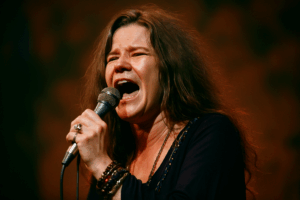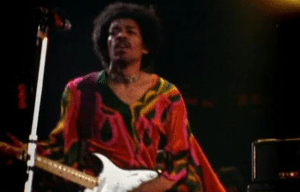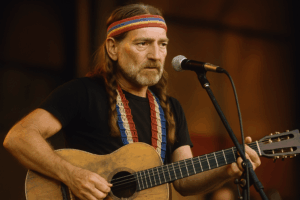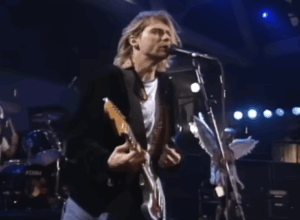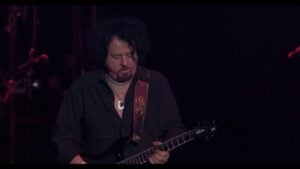The 5 Songs You Can’t Remove From The White Album By The Beatles
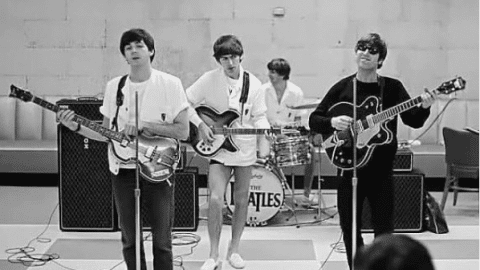
via @thedailybeatles / Instagram
The Beatles’ White Album doesn’t beg for attention—it earns it. Across its thirty tracks, it manages to be intimate, chaotic, polished, and raw all at once. The album’s strength isn’t just in the songwriting but in its willingness to stretch the limits of what a rock album could be, even at the risk of sounding fractured.
This wasn’t just four lads from Liverpool making music in a studio. The sessions welcomed more than forty musicians, with names like Eric Clapton lending their touch to iconic moments—his searing solo on “While My Guitar Gently Weeps” being just one example. Beneath the layered production and genre-hopping variety is a record that rewards deep, repeated listening.
Of course, not every track lands equally (looking at you, “Revolution 9”), but some songs stand out as immovable. They’re more than just highlights—they’re essential threads in the album’s fabric. The list below narrows it down to the five songs you simply can’t imagine The White Album without.
5. “Julia”
“Julia” is perhaps the most delicate and vulnerable track on The White Album. Written and performed entirely by John Lennon, it’s a deeply personal tribute to his mother, who died when he was a teenager. The song’s stripped-down arrangement—just Lennon’s voice and fingerpicked guitar—creates an intimate space where grief, memory, and longing quietly unfold.
Unlike the band’s more elaborate productions, “Julia” is understated, almost shy. There’s a sense that Lennon wanted no one else intruding on this moment—no harmonies, no additional instruments, just raw emotion channeled through melody. It’s not only a song for Julia Lennon, but also a reflection of John’s inner world at the time, one that was increasingly introspective and searching for peace.
It’s also significant that “Julia” is the only Beatles song where John performs completely solo. That choice underlines the song’s emotional importance and its status as something apart from the rest of the album. In an LP full of experiments, genre-hopping, and collaboration, “Julia” stands quietly but confidently on its own, a soft yet unshakable pillar of The White Album.
4. “Ob-La-Di, Ob-La-Da”
Though it sounds like a carefree singalong, “Ob-La-Di, Ob-La-Da” was anything but easy to create. Paul McCartney envisioned it as a light-hearted reggae-inspired tune, but the sessions dragged on for days, exhausting the band and frustrating the engineers. John Lennon famously hated the song, and at one point walked out in protest, calling it “granny music.” Still, Paul’s stubborn perfectionism shaped it into the version that made the final cut.
Despite the tension behind the scenes, the song has an undeniable charm. Its whimsical story of Desmond and Molly Jones is simple, catchy, and a bit absurd—qualities that have earned it both affection and criticism over the years. It’s often compared to “Yellow Submarine” for its childlike tone and polarizing reception among fans and critics alike.
Yet “Ob-La-Di, Ob-La-Da” serves a specific purpose within the album’s broader patchwork. Amid the darker, more experimental tracks, it provides a moment of levity and melodic bounce. Removing it would tip the balance, and even in its divisiveness, it plays a vital role in showcasing the album’s diversity and The Beatles’ refusal to be boxed into one style.
3. “Helter Skelter”
Anyone who associates Paul McCartney only with ballads hasn’t really listened to “Helter Skelter.” Written in response to critics calling The Beatles soft, the song is a loud, ferocious burst of proto-metal chaos that shattered expectations. With blistering guitar riffs, pounding drums, and Paul screaming himself hoarse, “Helter Skelter” introduced a rawness and energy that few anticipated from the same band that had released “Yesterday.”
Its title references a British amusement park slide, but the song itself is anything but playful. The distorted sound, escalating intensity, and wild abandon marked a turning point in how heavy rock could sound. Ringo Starr’s closing shout—“I’ve got blisters on my fingers!”—wasn’t just a throwaway line; it was a battle cry that captured the song’s physical and emotional intensity.
Sadly, the song gained a darker legacy when Charles Manson twisted its meaning for his cult’s warped ideology. Yet even this can’t obscure its importance as a pioneering track that influenced generations of hard rock and metal artists. “Helter Skelter” is essential not only for what it is, but for what it inspired.
2. “Happiness Is a Warm Gun”
At just under three minutes, “Happiness Is a Warm Gun” manages to feel like three songs in one, seamlessly blending different musical sections that range from blues to doo-wop to hard rock. John Lennon pieced together the lyrics and themes from fragments—magazine headlines, phrases, and visuals he encountered—crafting a song that feels disjointed in structure but unified in mood. The title itself, taken from an American gun magazine, is as ironic as it is disturbing.
What makes this song essential is its unpredictability and layered complexity. Each section morphs unexpectedly into the next, pulling listeners through a journey that’s dark, whimsical, and biting all at once. It’s a reminder of the band’s willingness to push boundaries, experimenting with form and tone in ways that were rarely heard in popular music at the time.
Despite its obscurity compared to the album’s better-known tracks, “Happiness Is a Warm Gun” was a favorite of Paul McCartney’s—a rare moment of public admiration from one Beatle to another during a time of growing tensions. It remains a striking example of Lennon’s more daring songwriting instincts and one of the album’s most artful constructions.
1. “While My Guitar Gently Weeps”
George Harrison’s masterpiece stands tall as one of the most emotionally resonant and musically rich tracks on The White Album. At a time when Harrison was pushing to be taken more seriously within the band, this song became a breakthrough. Its lyrics, born from a simple experiment with the I Ching, reflect a deep melancholy and philosophical outlook—George watches a world that seems indifferent to love and connection, and his guitar does the crying for him.
Eric Clapton’s guest appearance on lead guitar added a layer of brilliance that elevated the track even further. Though he was hesitant to intrude on Beatles territory, Harrison insisted, resulting in one of the most memorable guitar solos of the ’60s. Clapton’s playing adds emotional weight without overshadowing the song’s intimate sadness, making it a rare and powerful collaboration between two icons.
Its legacy didn’t end in the ’60s. The song found a second life during George Harrison’s 2004 Rock & Roll Hall of Fame tribute. With Dhani Harrison, Jeff Lynne, and Tom Petty on stage, Prince stole the show with a jaw-dropping solo that rivaled Clapton’s original—reminding the world just how transcendent the song really is. No version of The White Album feels complete without this epic track.










